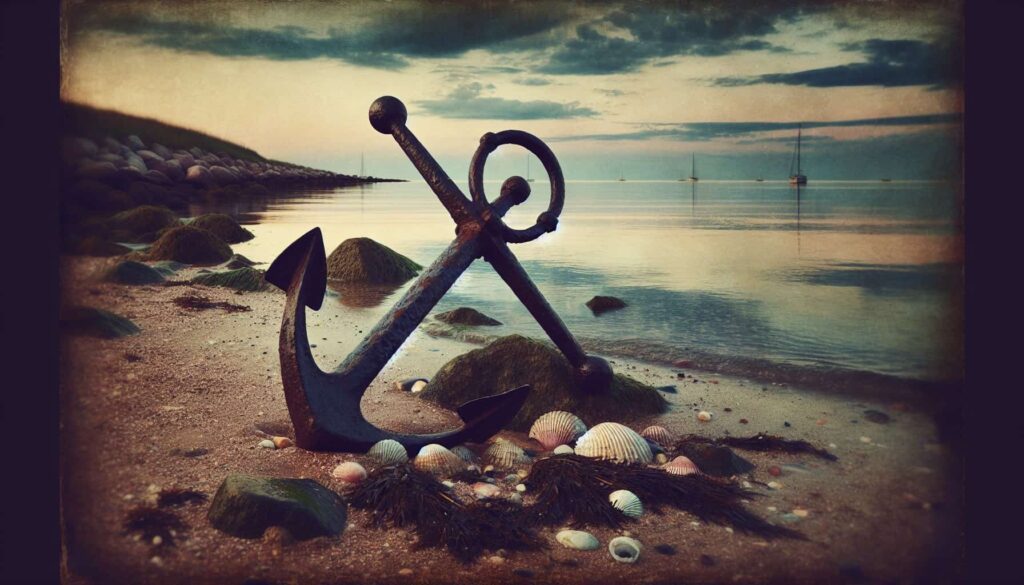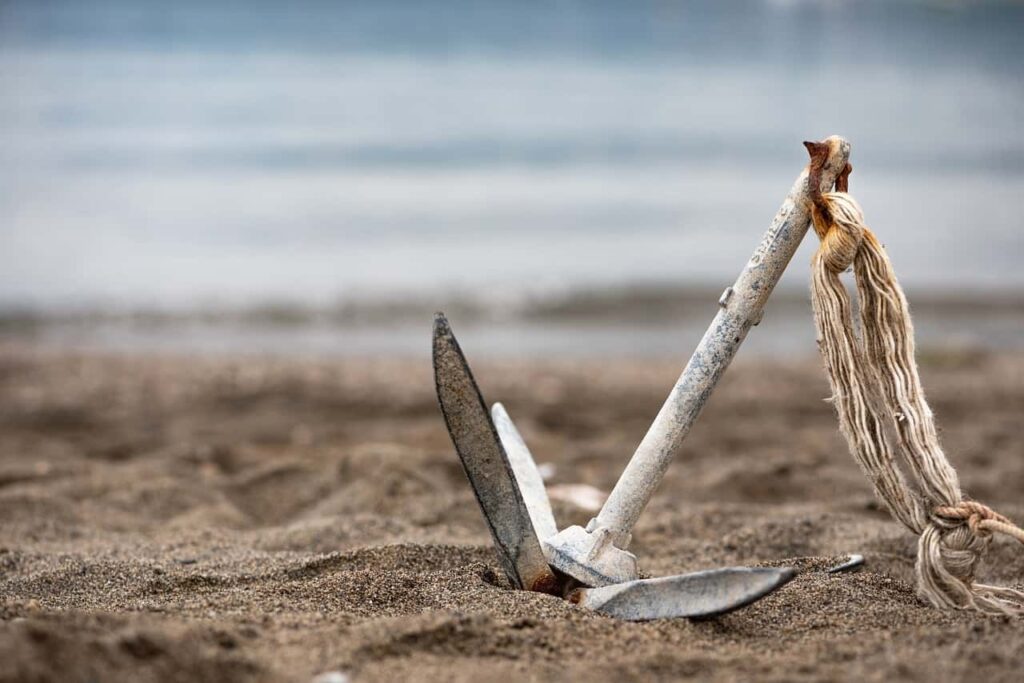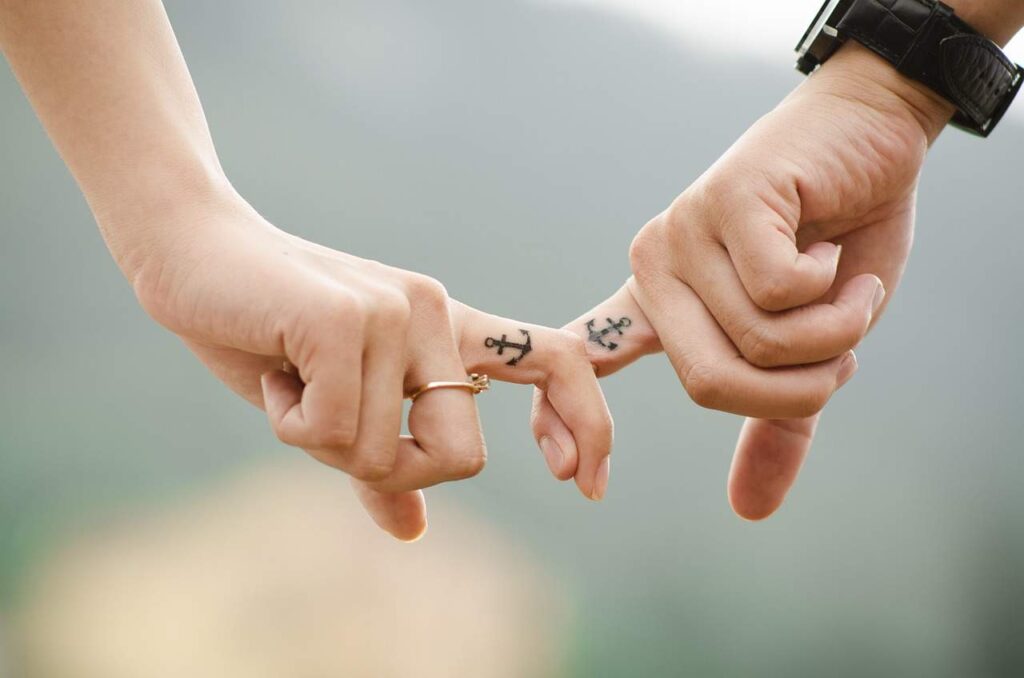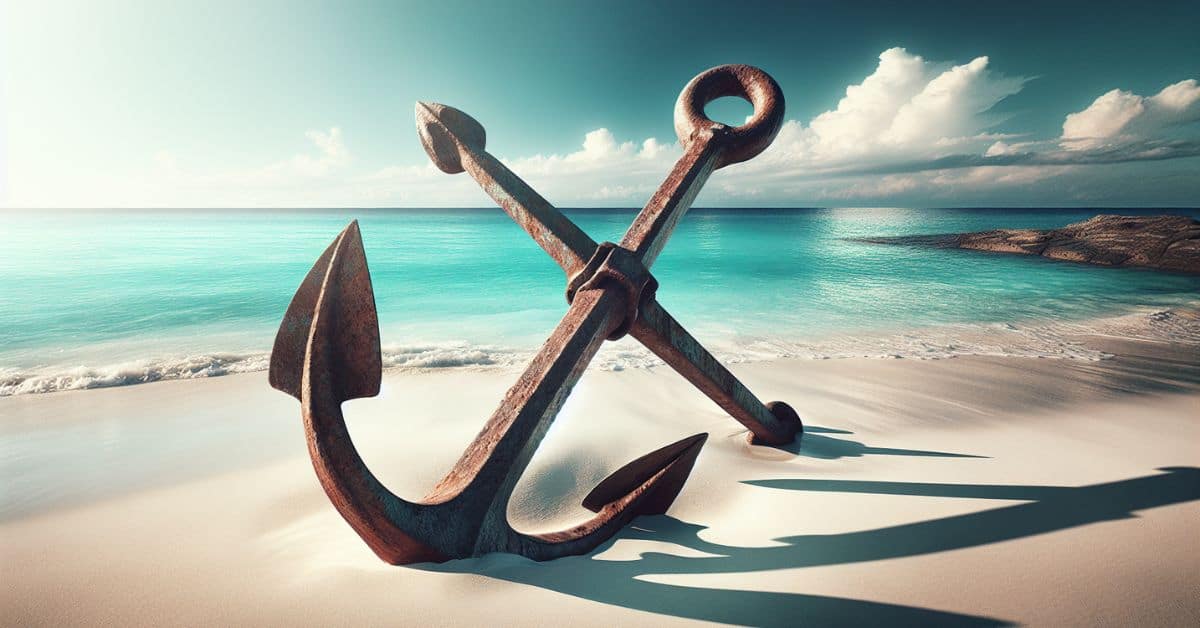Anchor Symbolism: Hope, Stability, and Strength
Diving into the world of anchor symbolism opens up a fascinating exploration of how this maritime object has anchored itself in our collective consciousness.
Whether it’s tattooed on the skin, worn as jewelry, or used in logos, the anchor holds a special place in the hearts of many. From hope and stability to strength and perseverance, the anchor symbolizes core human values that resonate universally.
Origins of Anchor Symbolism
The history of anchor symbolism stretches back thousands of years, with roots deeply entrenched in ancient civilizations. Originally, anchors were practical tools used by seafarers to prevent ships from drifting away, yet over time, they’ve blossomed into rich symbols of hope, stability, and steadfastness.
In ancient times, the sea represented a vast, uncontrollable force, capable of both giving and taking life. Sailors, facing the unpredictability of the sea, turned to symbols like the anchor as a talisman for safe return. Ancient Romans and Greeks often engraved anchors on the tombs of those who had perished at sea, signifying hope for a safe journey to the afterlife.
The significance of anchors continued to evolve through the ages. During the early Christian era, the anchor was adopted as a secret symbol due to its resemblance to the cross. Christians used it to discreetly express their faith and hope in eternal life, especially during periods of persecution.

By the Middle Ages, the anchor symbol had become universally recognized as representing safety and security. It was commonly used in heraldry and family crests, symbolizing a person’s reliable or stable nature.
The intertwining of the anchor with human values has allowed its symbolism to remain relevant through the centuries. Its ability to convey a sense of hope, stability, and strength in the face of adversity has made it a potent icon across cultures.
The Anchor as a Symbol of Hope
In the realm of symbols, the anchor stands out for its deep association with hope. This connection has roots that stretch back centuries, becoming a beacon of light during turbulent times. You’ll find that the anchor’s emblematic link to hope is not just by chance but is steeped in history and human emotion.
Ancient sailors relied on the anchor to keep their ships safe during storms, making it a symbol of stability and security in an unpredictable world. It’s this very reliability that led to the anchor being adopted as a symbol of hope. Whether navigating the high seas or facing life’s metaphorical storms, the anchor represents an unwavering promise of steadiness amidst chaos.
Interestingly, the anchor’s symbolism has evolved to encompass more than just physical security. It also signifies emotional and spiritual anchorage. For people going through trying times, the anchor is a reminder that no matter how fierce the storm, there is always something solid to hold on to.

In art and literature, anchors often appear as motifs to convey messages of hope and resilience. From tattoos representing personal struggles to artwork that inspires communities, the anchor’s presence is a powerful testament to its enduring legacy as a symbol of optimism.
The Anchor as a Symbol of Stability
The anchor, with its heavy, unyielding presence, has long stood as a universal symbol of stability. Imagine it fixed firmly on the seabed, holding ships securely against the forces of wind and waves. This imagery captures the essence of stability in its most literal sense, yet its significance stretches far beyond the physical.
For centuries, the anchor has embodied the concept of emotional and psychological steadiness. In times of turmoil or uncertainty, it serves as a powerful reminder that you can find solidity and safety by anchoring yourself to a set of values, beliefs, or relationships that provide support and direction. Just as a ship relies on its anchor to maintain its position, you can draw on personal anchors to stay grounded when navigating life’s challenges.
The anchor also symbolizes the importance of having a stable foundation. It suggests that, regardless of the tumultuous waves of life, there’s always something reliable you can hold onto. This symbol teaches the lesson that, even in the stormiest of times, stability is within reach if you know where to set your anchor.
The Anchor as a Symbol of Strength
When you think of an anchor, its primary role in mooring ships to prevent them from drifting due to wind or current highlights its intrinsic strength and reliability. This physical attribute has made the anchor a universal symbol of strength, not just in withstanding the forces of nature but also in life’s metaphorical storms.
Anchors embody resilience and fortitude, qualities that are essential when facing adversity. They represent the inner strength required to stay grounded during turbulent times, serving as a visual reminder that you can weather any storm with determination and perseverance.
In various cultures, the anchor signifies not only physical might but also emotional and moral strength. It’s a beacon of hope for those who are in the midst of struggle, offering reassurance that holding firm to your principles and beliefs provides the stability needed to overcome challenges.

Such symbolism is prevalent in art and literature, where anchors often symbolize characters or situations that stand steadfast in the face of difficulty, emphasizing the importance of being resilient and unwavering.
Through these depictions, the anchor communicates a powerful message: that strength isn’t just about enduring but also about the ability to maintain your position with confidence and integrity, no matter the pressures you face.
Anchor Symbolism in Art and Design
In the realm of art and design, anchor symbolism stands as a versatile and potent motif. From tattoo artistry to high fashion, its imagery conveys myriad meanings, each as profound as the next.
In interior design, anchor motifs are utilized to instill a sense of calm and steadfastness in the living space. Whether through ornamental pieces, wall art, or textile patterns, the anchor brings a touch of the serene and the maritime into homes, reminding inhabitants of the tranquility and firmness associated with the symbol.
Fashion has also embraced the anchor, where it often appears on jewelry, clothing, and accessories. This usage not only pertains to the nautical aesthetic but also communicates a wearer’s identification with the qualities the anchor symbolizes: resilience, hope, and unwavering resolve.
Popular Anchor Symbolism in Tattoos
When you’re exploring the realm of tattoos, the anchor stands out as an emblem laden with depth and personal meaning. It’s no wonder that countless people opt for anchor tattoos, embedding stories and values beneath their skin. Anchors in tattoos often symbolize stability, hope, and resilience, mirroring their symbolic significance throughout history.
Opting for an anchor tattoo might be your way of expressing a solid foundation or a steadfast belief in yourself. It’s a reminder that regardless of how turbulent life gets, you possess the inner strength to stay grounded. For some, it symbolizes a safe return after overcoming life’s storms, making it a popular choice among travelers and those who’ve weathered personal challenges.
Anchor tattoos often incorporate additional elements that further personalize their meaning. A compass, for example, may accompany an anchor to signify guidance, reinforcing the idea of navigating through life’s uncertainties with hope and stability at your core. Similarly, combining an anchor with a heart or infinity symbol can represent unyielding love or endless strength.

Anchor Symbolism in Jewelry
Anchor jewelry often serves as a poignant reminder of one’s strength to hold steady amidst life’s unpredictability. It’s a representation of anchoring oneself to their beliefs or loved ones, providing a sense of security and steadiness. For many, a piece of anchor jewelry isn’t just an accessory; it’s a personal talisman, embodying their struggles, triumphs, and the calm after the storm.
Designers have long recognized the depth of anchor symbolism, incorporating it into various styles that cater to all tastes. Whether you prefer minimalist designs or more intricate creations embellished with gems and other symbols, there’s an anchor piece that resonates with your personal story and aesthetic. Silver, gold, and even recycled materials are commonly used, each adding its meaning to the jewelry.
Engagement rings and commitment bands featuring anchor motifs are increasingly popular, symbolizing a couple’s promise to remain steadfast and committed through the ebbs and flows of life. This use underscores the anchor’s universal appeal as a symbol of enduring love and unwavering support.
Conclusion
The journey through the rich tapestry of anchor symbolism highlights its profound impact across cultures and eras. This enduring symbol carries a weight far beyond its physical presence.
Anchors have become emblematic of the human spirit’s resilience, a beacon of hope and stability in tumultuous times. Whether etched on the skin, woven into the fabric of our homes, or dangling from a necklace, the anchor remains a powerful reminder of our capacity to withstand life’s storms.
It encourages you to hold fast to your values, to find strength in stability, and to anchor yourself in the belief that perseverance through adversity is not only possible but essential.
Embracing the anchor’s symbolism is to acknowledge the importance of staying grounded while navigating the unpredictable seas of life. It’s a testament to the enduring human desire for security and steadfastness in an ever-changing world.
Share the love!
